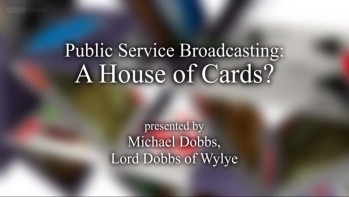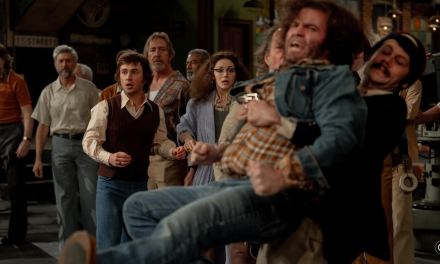The kind of total or pure aesthetic experience I wish to describe here only happened to me (at this pitch of intensity) once in my life before that I can remember, and I’m not sure that this should be grounds for gratitude that it happened at all or regret it didn’t occur more often. As my title suggests it happened first of all in response to some classical music and my sense of awe is best captured by the opening paragraph of E.T.A Hoffman’s reputation-establishing review of Beethoven’s Fifth Symphony in 1811:
The reviewer has before him one of the most important works by the master whose pre-eminence as an instrumental composer it is doubtful that anyone would now dispute; he is utterly permeated by the subject of the present review, and may nobody take it amiss if he exceeds the limits of conventional appraisals and strives to put into words all the profound sensations that this composition has given rise to within him.
Well for this reviewer it was the Third not the Fifth that supplied what Hoffman goes on to describe as overwhelming power of the music that must be ‘surrendered’ to, and it was about twenty years ago when I was sitting in my university office listening for the third or fourth time to its first movement. I must confess that my knowledge of classical music at the time was based on not much more than my father’s decision to play Hooked on Classics in what seemed to be an infinite loop when I was a child and nor, in choosing to bunk off work for twenty minutes with the Eroica, was I brushing up my cultural capital: instead I was curious to hear what Norman Bates was listening to in his bedroom.

But that’s the thing. Quite unexpectedly, unbidden, about a minute before the first movement reaches its glorious climax, I was overcome with – what? – not quite emotion, as in sadness or unalloyed sensual pleasure, but that peculiar and unique aesthetic sense of being overwhelmed, transported in some way, as if carried by a titanic wave or the wind of a bursting supernova, akin to that oceanic sensation William James associated with religious feeling.
Tears without sadness, emotion without feeling, feeling without relief – such a contradictory, paradoxical muddle, and of course one that generations of philosophers and aestheticians from Aristotle to Gadamer to Langer to Ngai have contended with. I hadn’t thought that much more about it since – that is it did not, perhaps surprisingly, prompt a further desire to immerse myself in the vast range of musical achievement, although I read a lot of Charles Rosen afterwards in order to try to make sense of the occasion. And then a few weeks ago the inevitable happened: you wait twenty years for another pure aesthetic kick and three come along all at once.
The first seemingly by chance when I realised I had thirty minutes to kill before a meeting with a university executive and, given the impossibility of completing any other task reasonably in that time, I decided to pop into the University of Queensland Art Museum which our campus locates conveniently on the way to the Dean’s office. I knew that there was a Joseph Marioni exhibition on, and that esteemed art historian and critic Michael Fried would be visiting soon in order to speak about it, so it seemed a good opportunity to brush up on an artist I had never heard of until that morning. Marioni specialises in monochrome paintings that seem to consist of a single vivid colour achieved by the controlled pouring of paint and glazes down the surface of the canvas. As I walked into the gallery area and was confronted by the glorious Green Painting (no. 4, 2013) it happened again, that sudden but familiar sensation of overwhelming transport. As someone used to receiving ambient as well as direct aesthetic pleasure (not quite, that is, the intensity of the pure aesthetic kick) from mass media (especially film and television) this was quite a shock. I cannot reproduce the Marioni here, even as an image, because its power is literally available only in its presence: the layers and lines of paint have the powerful and paradoxical effect of directed intentionality. Fried describes them as ‘paintings in the fullest most exalted sense of the word’ where the ‘highly refined interplay between the physicality of the support and the materiality of the pigment is double: it gives rise to a sense of seamlessness, of aesthetic harmony, that…is almost Eastern in its affective resonance; at the same time, the interplay compels a recognition of the separateness of the elements’. Fried goes on to note that ‘no illustration can begin to capture the absolute specificity, which … means the transfixing intensity’ of the hue, the surface, and the ‘sheer rightness’ of the colour and its suggestion of depth.
Around the same time I saw the Marioni – I can’t recall if before or after – I saw the fourth episode of the third season of Game of Thrones, ‘And Now His Watch Is Ended,’ and it happened again. Having never seen the show before or read the books, I had been bingeing (what a terrible, pejorative word for such a pleasurable absorption of culture!) on the series since the Easter break, watching many episodes back to back, and then as the current (2013) season began to be published, going back again to re-watch the first season whose initial strangeness and sense of a gamble one feels on beginning a show (who are these people? what is their backstory? is it worth my time?) was transformed into intimate familiarity. Hence there was a strong sense in my mind of a continuous fictional world with all of its faces and motions and settings held together in a compelling patterning of dramatic arcs and layers. Nevertheless, mere familiarity and fluency with its narrative events and characters, cannot account for the impact or the purity of the aesthetic kick. As with the first movement of the Eroica symphony I started to feel toward the end of the episode that sense of directed artistry, familiar in its repetition and yet hinting at a new unity. So much in the adaptation of Game of Thrones depends on patience and pacing – the gradual, glacial emergence of magic and emblems of the fantastic; the alternation between the brutal explicitness of its violence, and its conjuring of a hidden, implied substrate of cruelty in tension with the moderate scattering of hints that redemption, kindness and gentleness have their place too amidst its medieval carnage and savagery.
The climax of this episode concerned a sudden reversal of power – a theme which is gestured to in the opening scene (where a victim of abuse, in order to illustrate the virtue of patience, recounts the story of his childhood torture as he un-crates – to our eventual surprise – the roped struggling figure of his former abuser) – and is a register of many of its scenes. In the final sequence, Daenerys Targaryen (Emilia Clarke) ‘the Mother of Dragons’ has been bargaining to exchange one of her three dragons for an invincible robot-like slave army (the ‘Unsullied’) with a repugnant slaver Kraznys (Dan Hildebrand). The latter has been communicating with her through a translator who he believes has been censoring his misogynist contempt. As he is handed the reins of the dragon I realised that the episode was about to cash in its final reversal. It is important to remember that long-form serial drama has a number of resources available to it, not least its ability to accumulate and store the resentful energy and force of characters who have undergone unjust treatment. Daenerys has developed throughout the seasons from a fey, helpless instrument for her brother’s designs on power (he gifted her to a brutal warrior chief in exchange for an army), to someone who has had to use her intelligence and charisma to lead and liberate the enslaved and abused. At the moment she is given ultimate authority of the Unsullied she turns to Kraznys and reveals that she is fluent in his language (and hence knows about his contempt) and, as he holds onto its chain, that dragons are not slaves. It incinerates him and she commands the Unsullied to exterminate their masters, and to liberate themselves.

This crude account strikes me as inadequate to the feeling it prompted: like Green Painting you need to be right in front of it, but also aware of its underpinnings in the development of the show and the character, so that one experiences the sudden uncoiling of stored power as the product of a deep history as well as an awesome spectacle in the moment. Equally, this moment might be hospitable to a reading that locates the scene in a very contemporary light, so that we can attribute the feeling of empowerment among an audience as not only mirroring that of the character but also connecting with feminism – a young woman destroys the evil of a patriarchal villain through the purity of her politically right-on heart. Daenerys never situates herself as a victim and she makes sure the people who follow her do so out of choice rather than compulsion. But it is not the political content alone that carries the aesthetic kick, much more, I think, to do with our sense of deep forms of justice made sensual as well as visible. Hoffman’s paean to Romantic art in writing about the Fifth again captures in words something of the fluidity and power of this kind of aesthetic moment:
Here shining rays of light shoot through the darkness of night, and we become aware of giant shadows swaying back and forth, moving ever close around us and destroying within us all feeling but the pain of infinite yearning, in which every desire, leaping up in sounds of exultation, sinks back and disappears. Only in this pain, in which love, hope, and joy are consumed without being destroyed, which threatens to bust our hearts with a full-chorused cry of all the passions, do we live on as ecstatic visionaries.
Hoffman’s bombastic prose is trying to grasp that odd doubleness of aesthetic sensation, of the pain of yearning, the alternation between fragmentation and unity which is reminiscent, too, of Fried’s account of the harmony and separateness of Marioni.
My final example, much more recent, is another ending (perhaps endings offer a peculiar aesthetic opportunity because they can choose to offer or refuse unity and closure in the face of what comes before) this time from the extraordinary sixth season of Mad Men. By now I’d had a chance to reflect on my Marioni and Daenerys epiphanies and so was not expecting any further treats, but thanks to the current richness of US television drama I got to have another one. In ‘A Tale of Two Cities’, Pete Campbell (Vincent Kartheiser), once again shattered by the rest of the world flying beyond his personal and professional grasp – the advertising agency has just been ‘given away’ in a name change resulting from its merger with a rival – walks out of Don Draper’s office (where we have witnessed another moment of minor defeat as he is confronted by Don’s indifference), and walks up to bearded creative Stan Rizzo (Jay R. Ferguson) who is seated smoking a joint. “What do you think you’re doing?” “Working.” Pete takes the joint, sits down on the burnt orange coloured seat alone, and takes a good long toke, just as the visuals go into slow-motion and an anonymous yellow miniskirted figure walks by, curling his attention as the smoke unwinds from his lips and we cut to a shot of his full self-absorption.

The juxtaposition of motion, music and the ‘sheer rightness’ of colour plays a crucial role in this aesthetic kick, which has all the content of defeat and resignation – as well as contemplation and reflection – rather than empowerment. As the slow motion begins we hear the distorted electric guitar that opens Janis Joplin’s beautifully psychedelic version of ‘Piece of My Heart’; the music eloquently colours a defeated – but now resurgent? – Pete, the louche unfolding of smoke from his lips, and his transformation from leering surveyor of miniskirted legs to self-absorbed anomic individual in mere seconds. Is it any coincidence – and what does it mean for our experience of it– that the symphony of shadings and gradations of orange which dominate the shot of Pete smoking (and in a show which treats colour with an expressivity that puts even Sirk to shame), evokes Robert Crumb’s design of Big Brother and the Holding Company’s album ‘Cheap Thrills’ from which the song is taken? What can we do with connections and epiphanies such as this, except communicate them?

Jason Jacobs is Reader in Cultural History in the School of English, Media Studies and Art History, University of Queensland. He is author of The Intimate Screen and Body Trauma TV. He is currently working on an Australian Research Council funded project called ‘Worldwide: the history of the commercial arm of the BBC’. His BFI TV Classic on Deadwood was published in July 2012. He is writing a book on David Milch for the Manchester University Press Television Series and is co-editor with Steven Peacock of the forthcoming collection Television: Aesthetics and Style (Continuum).





